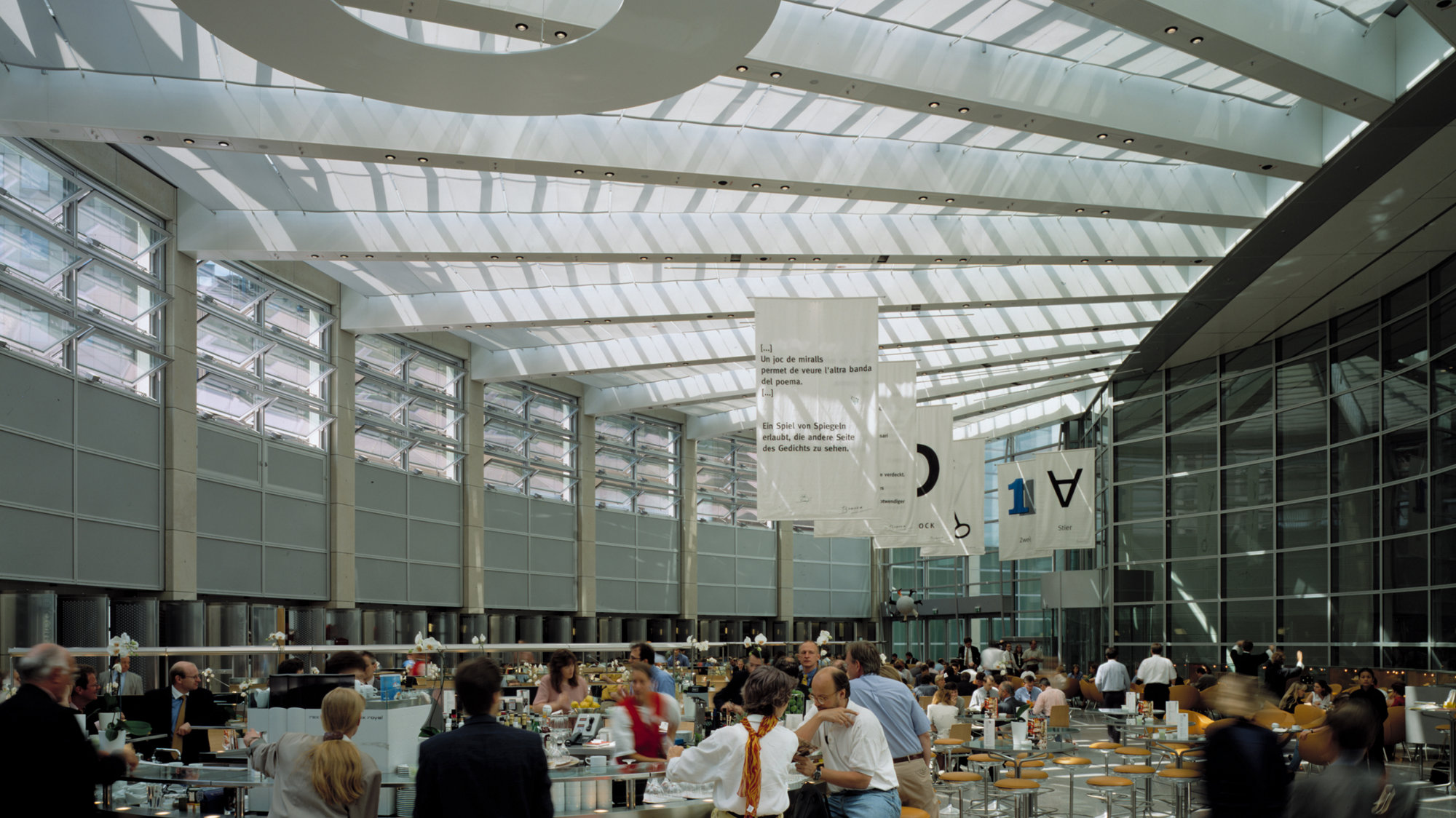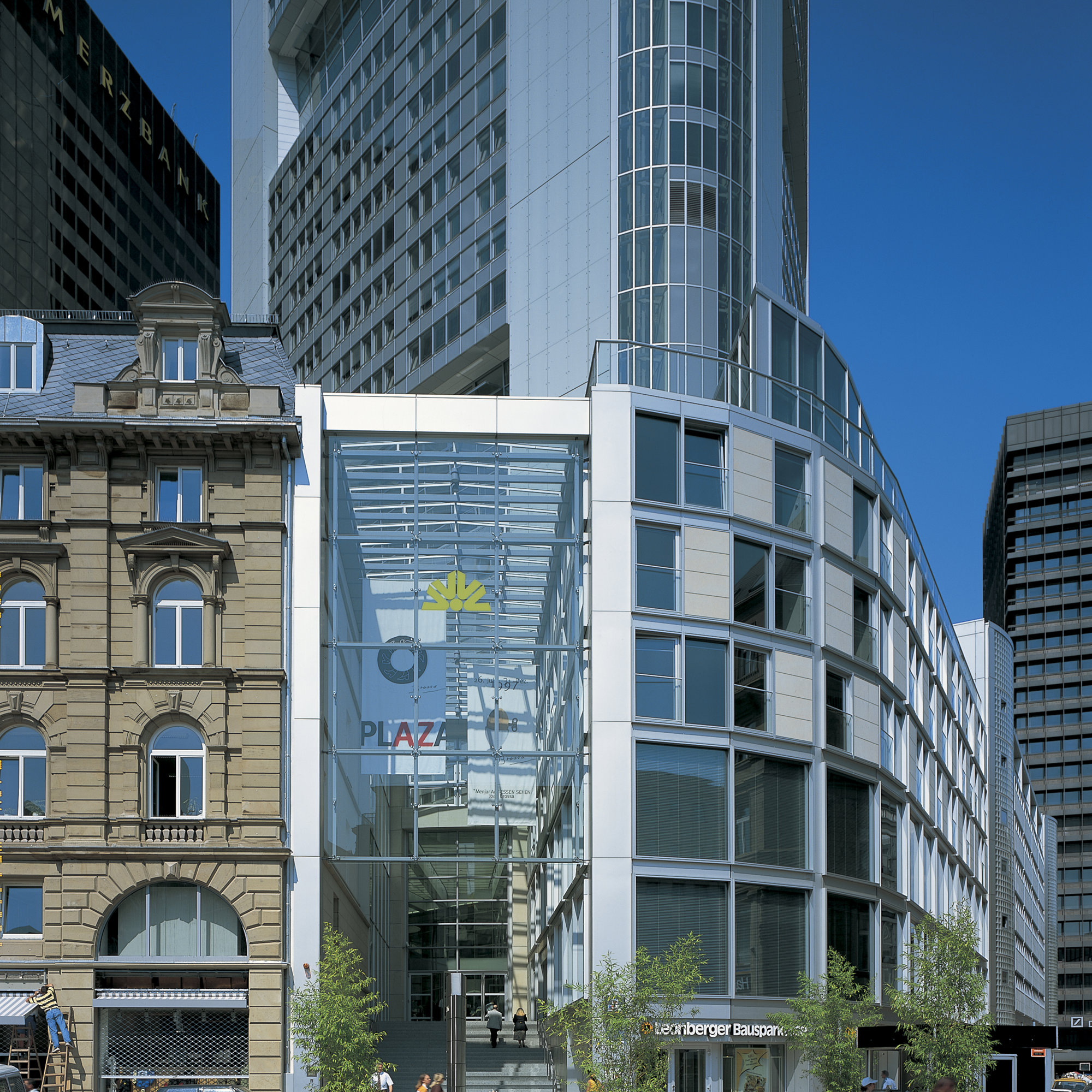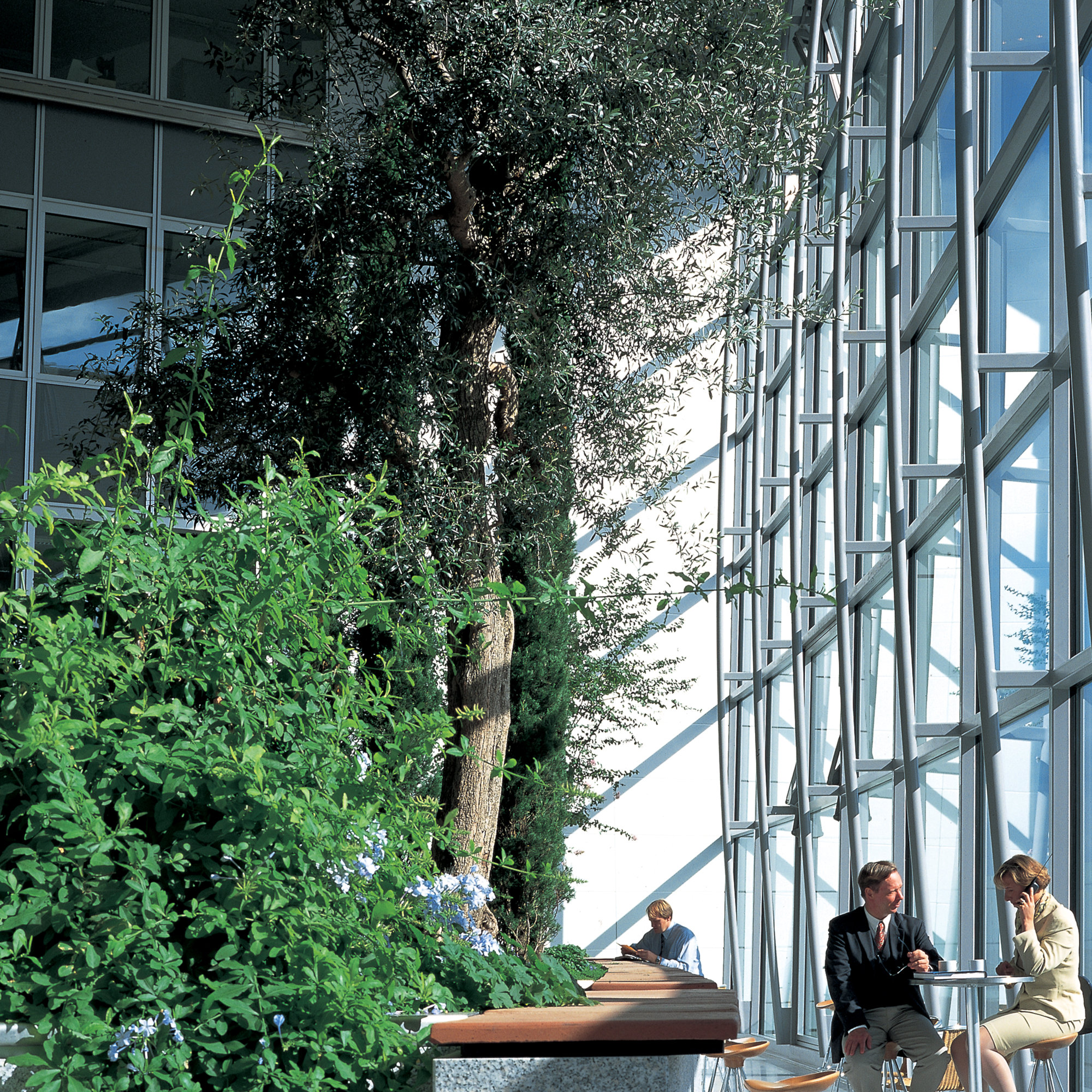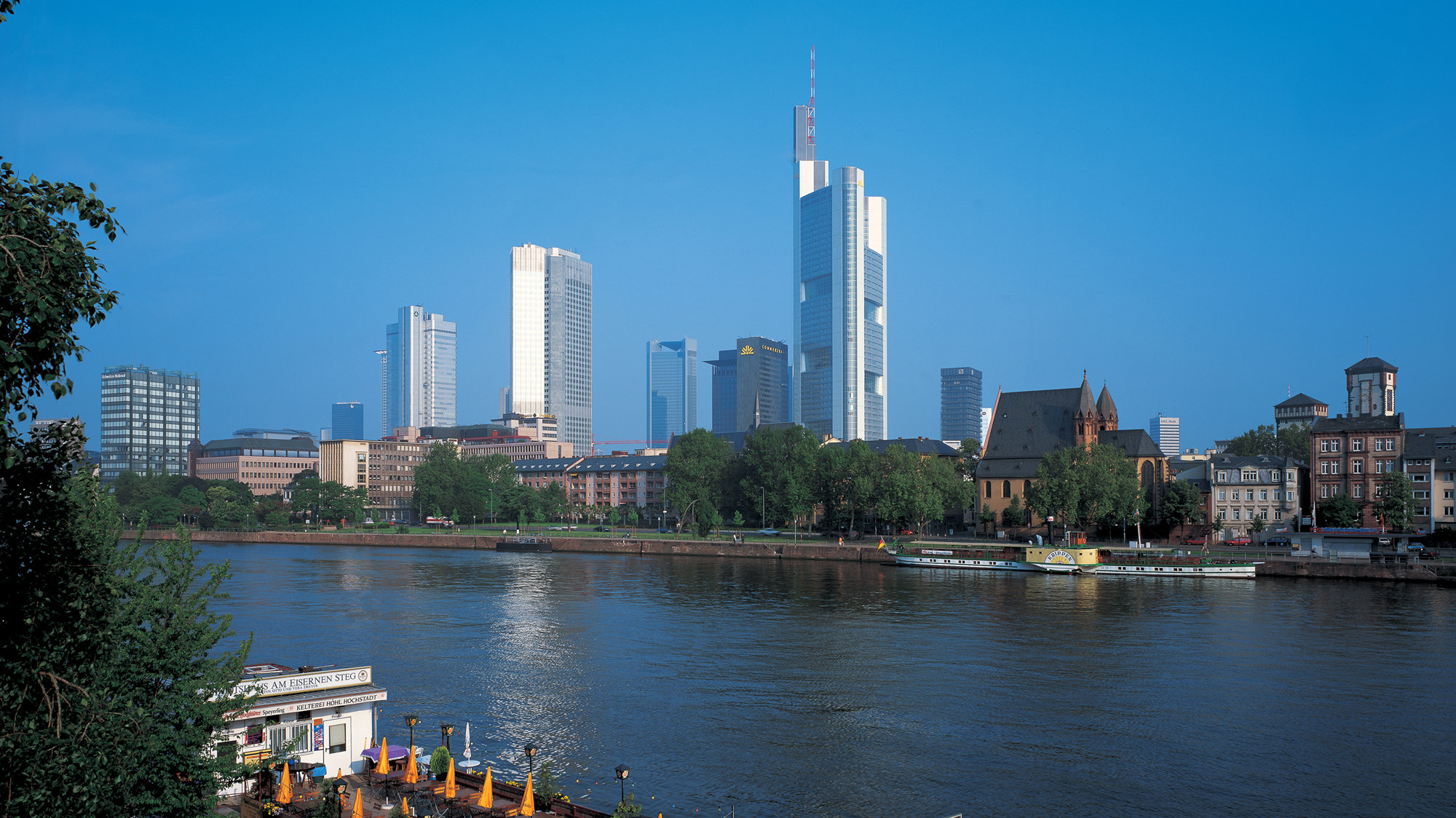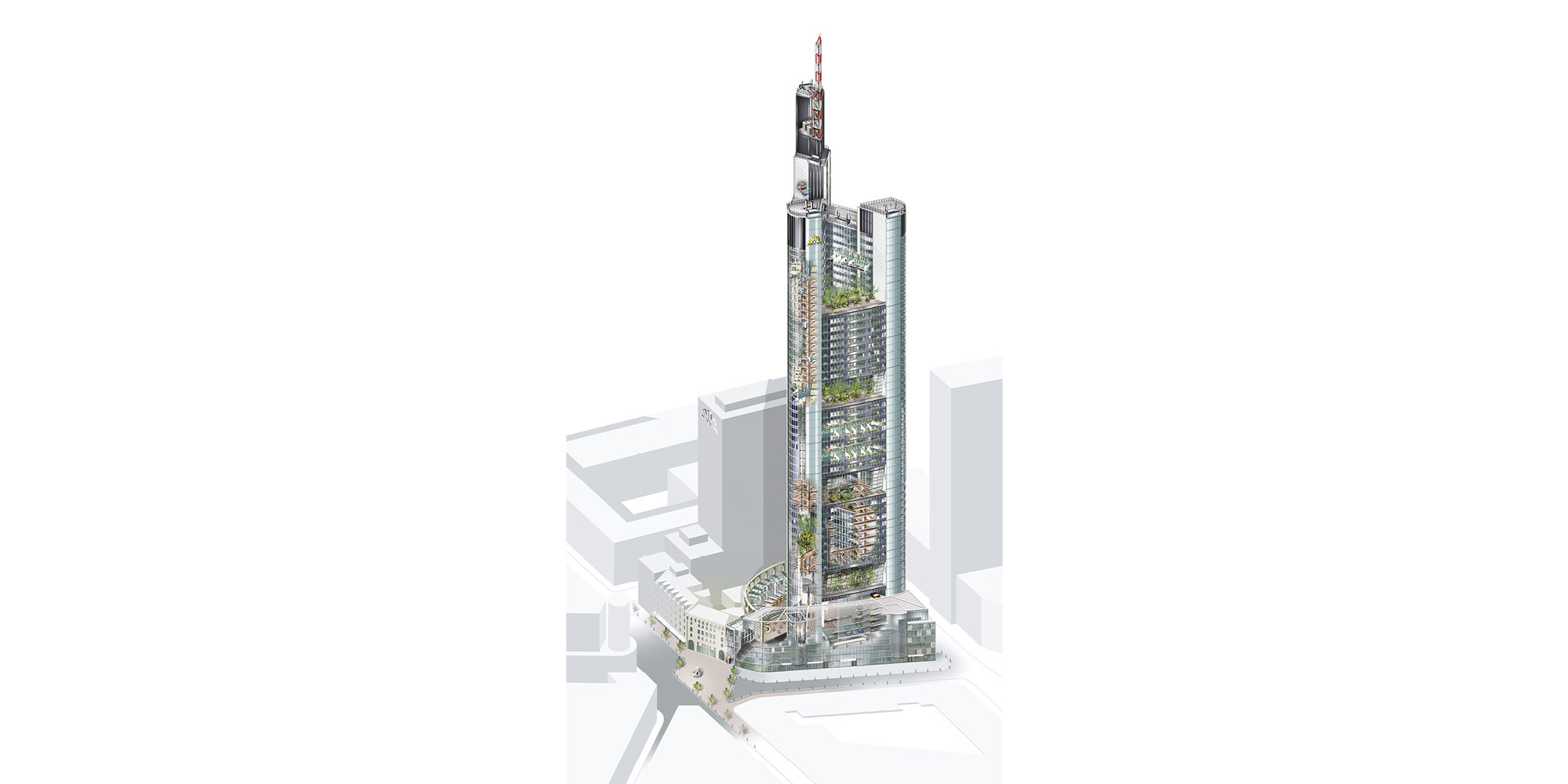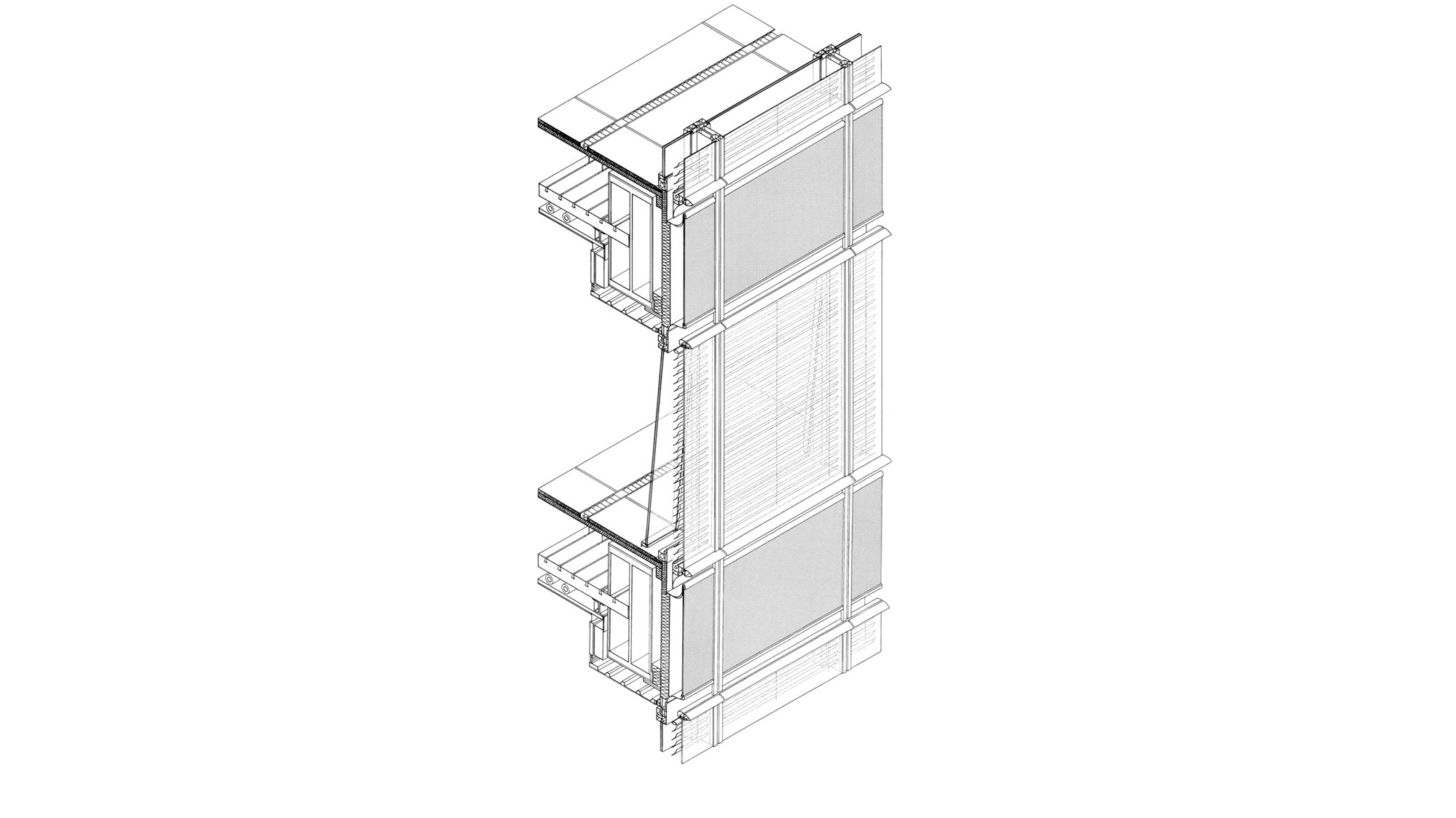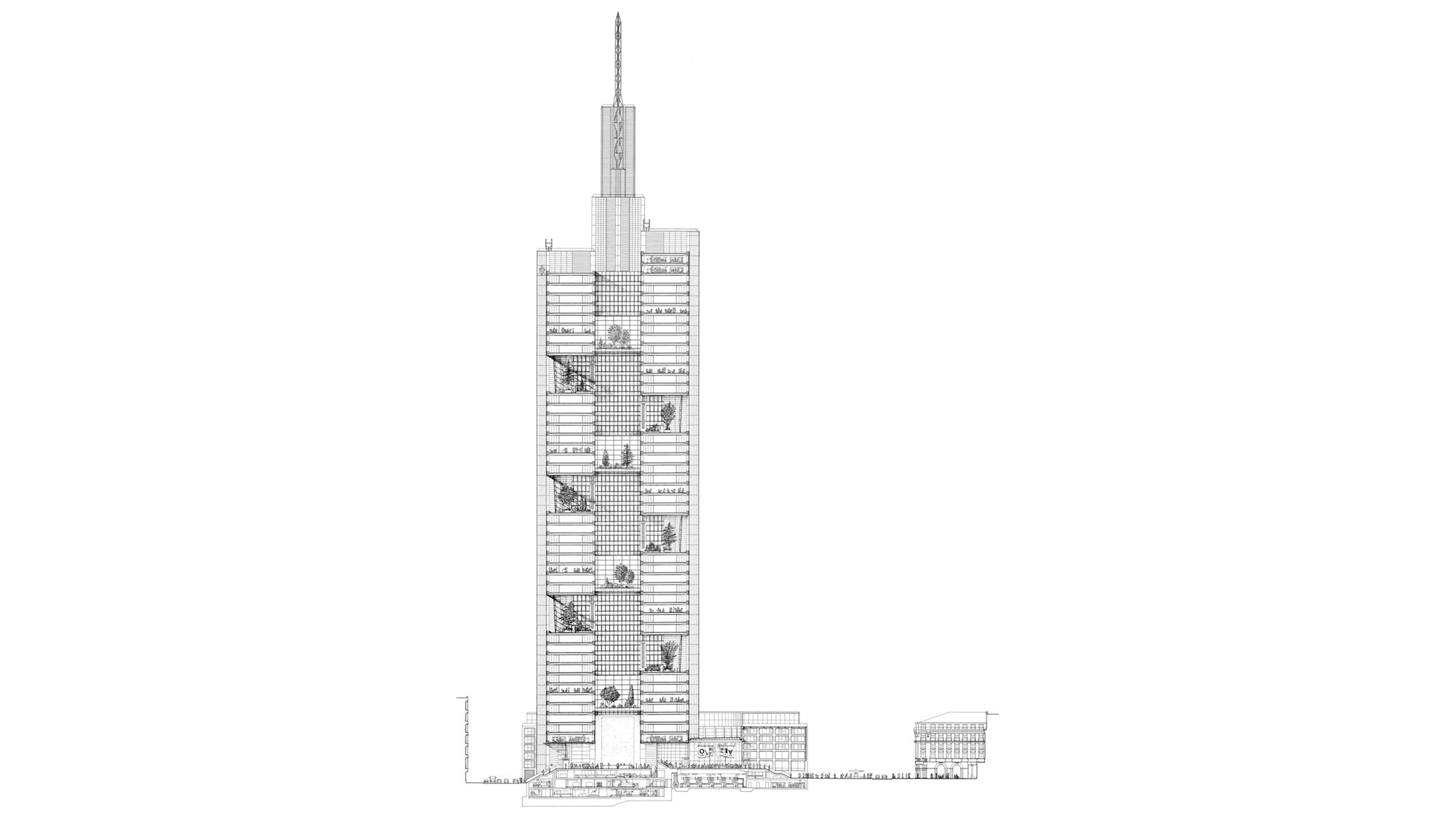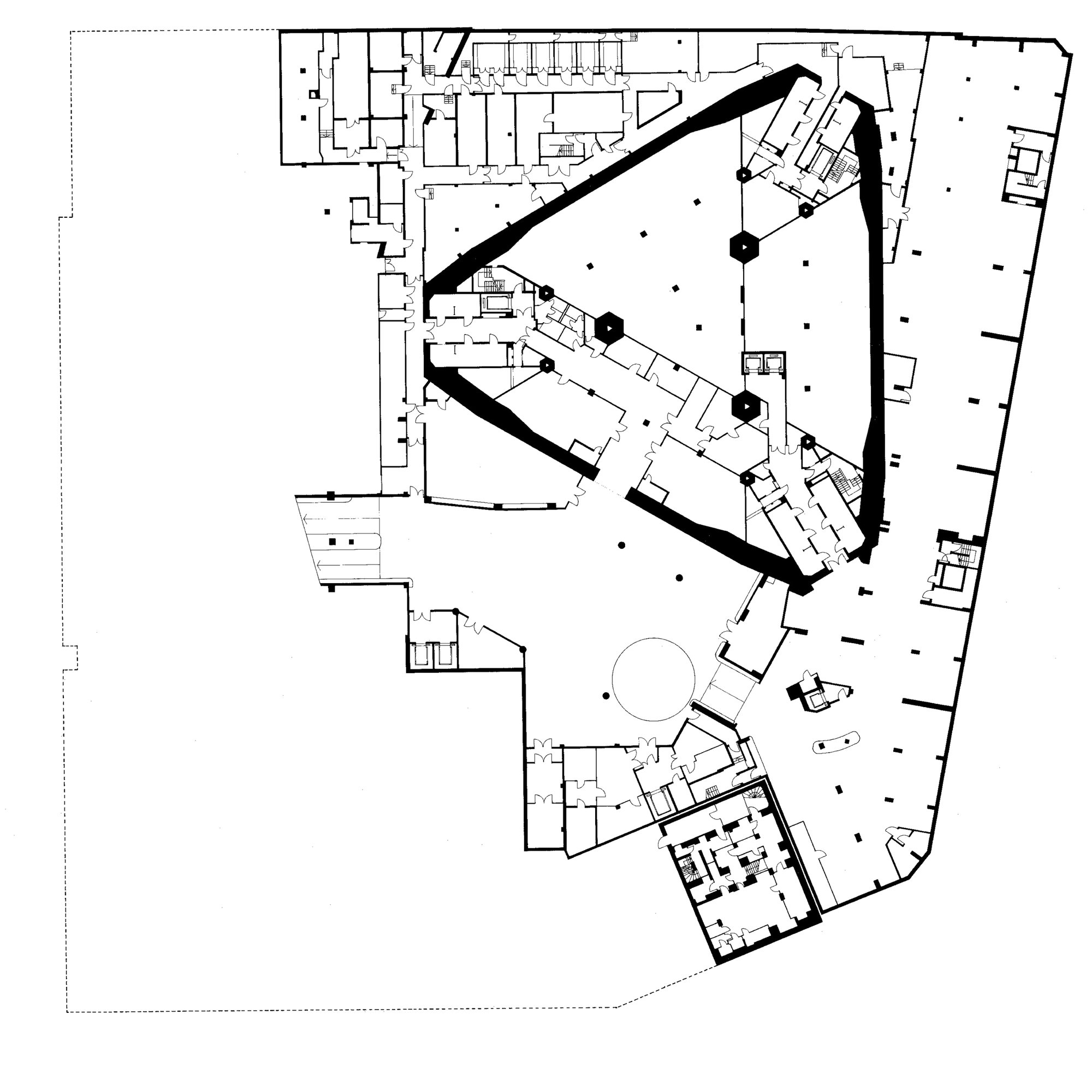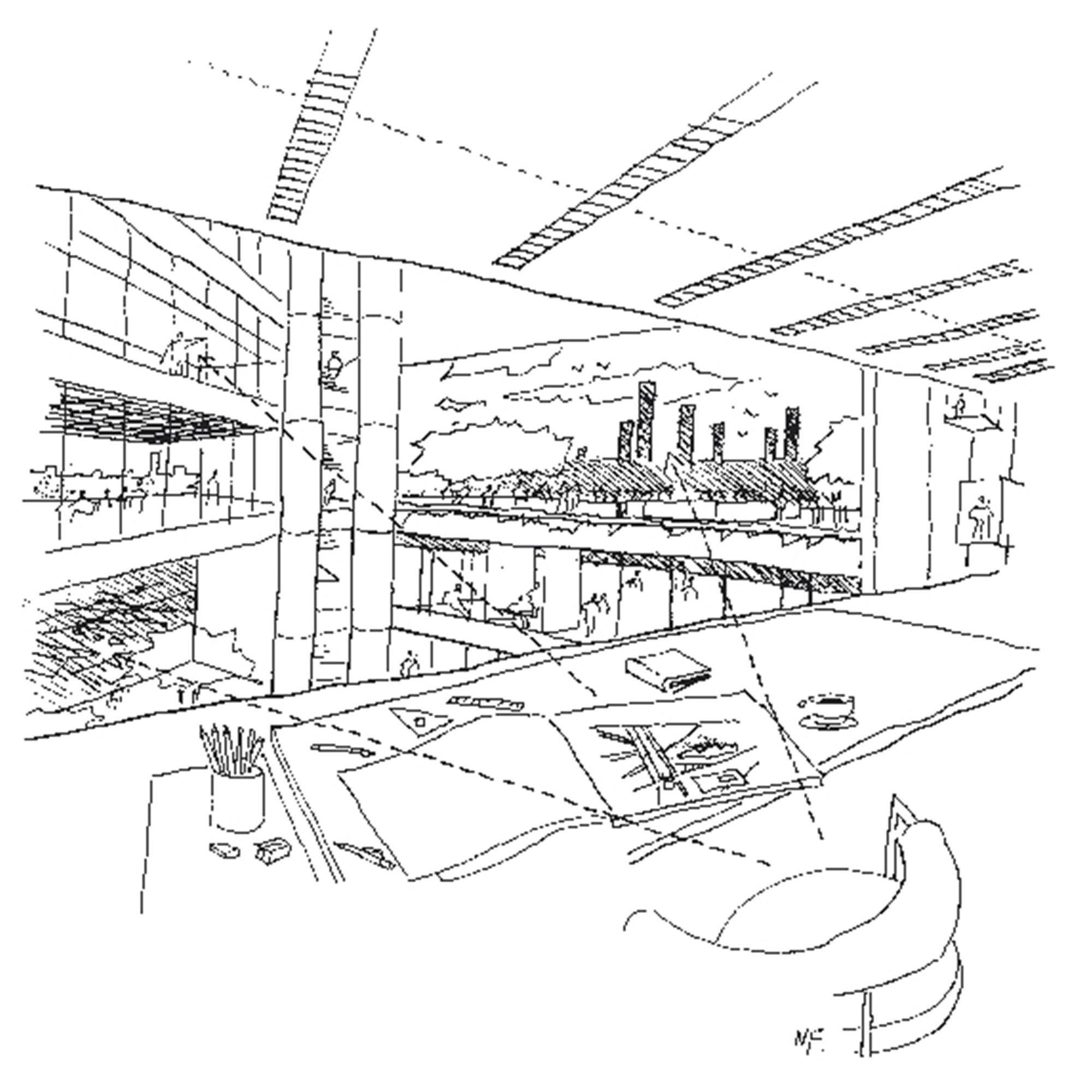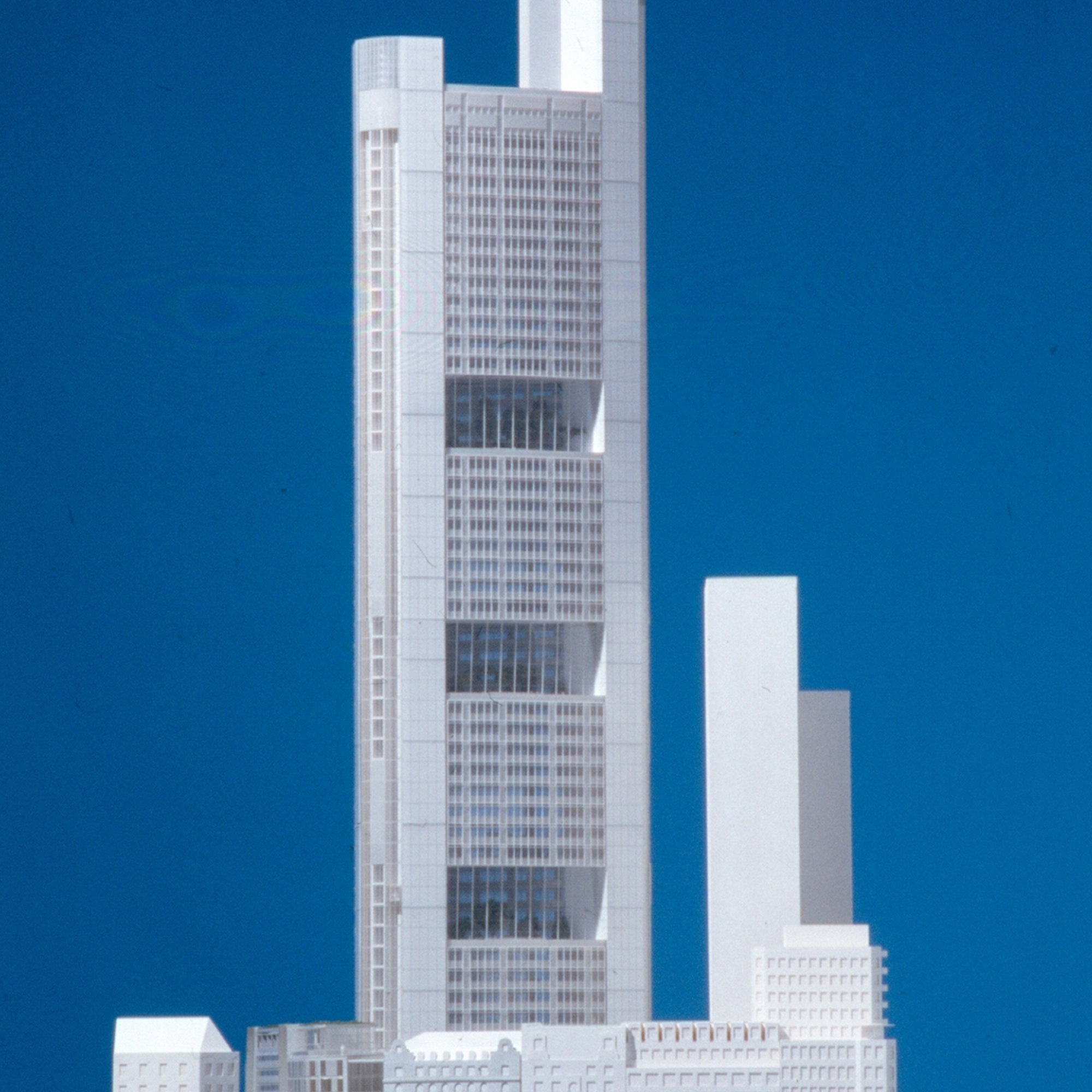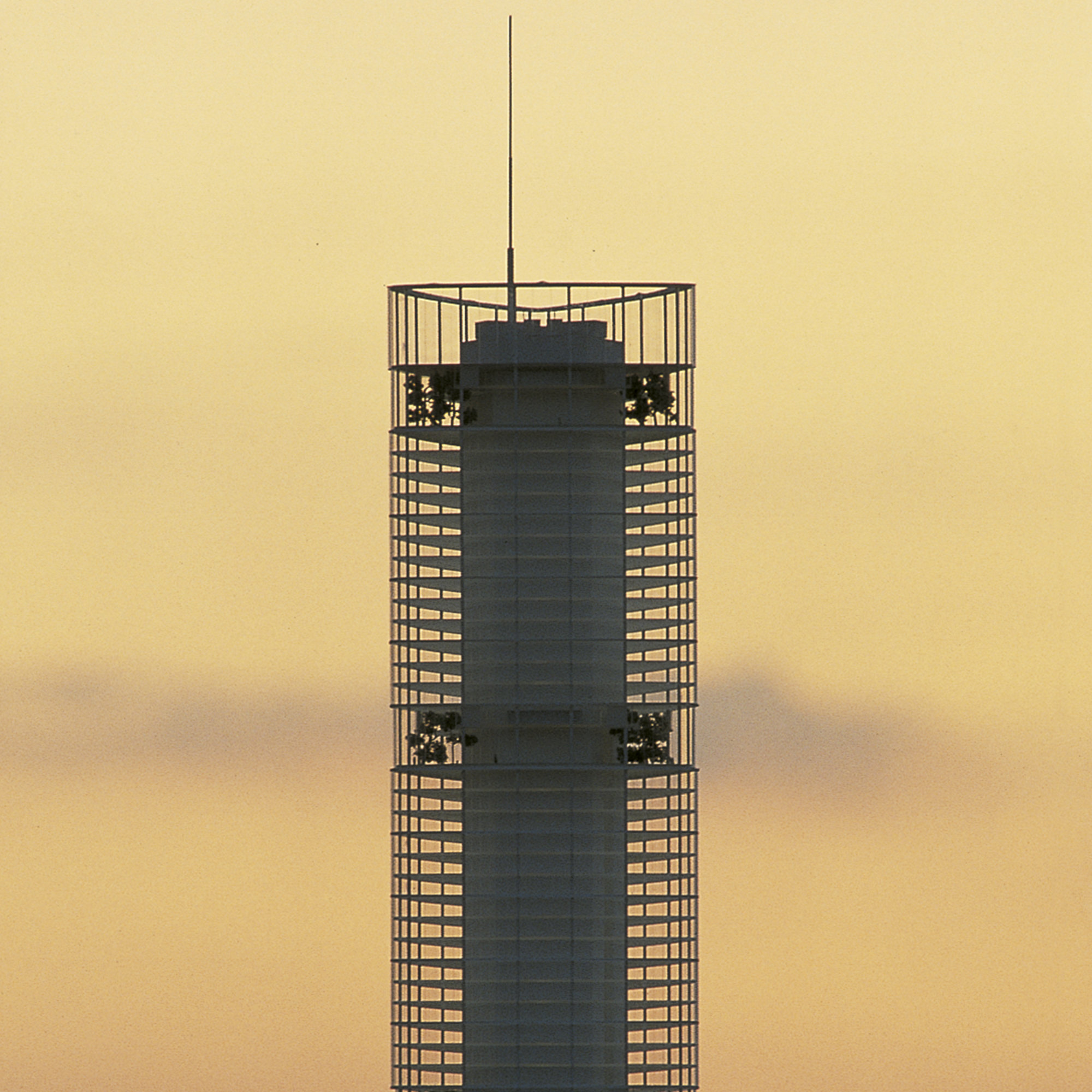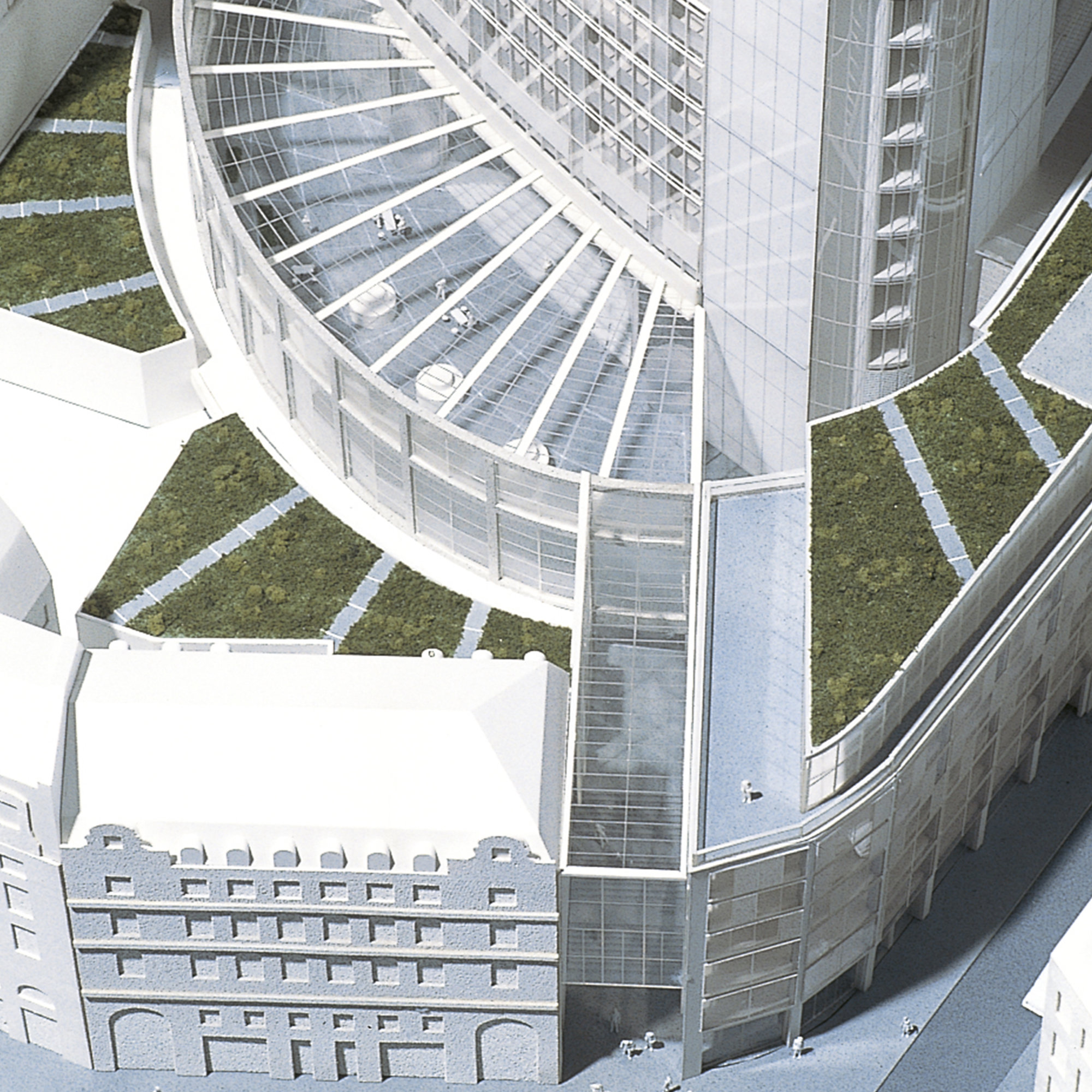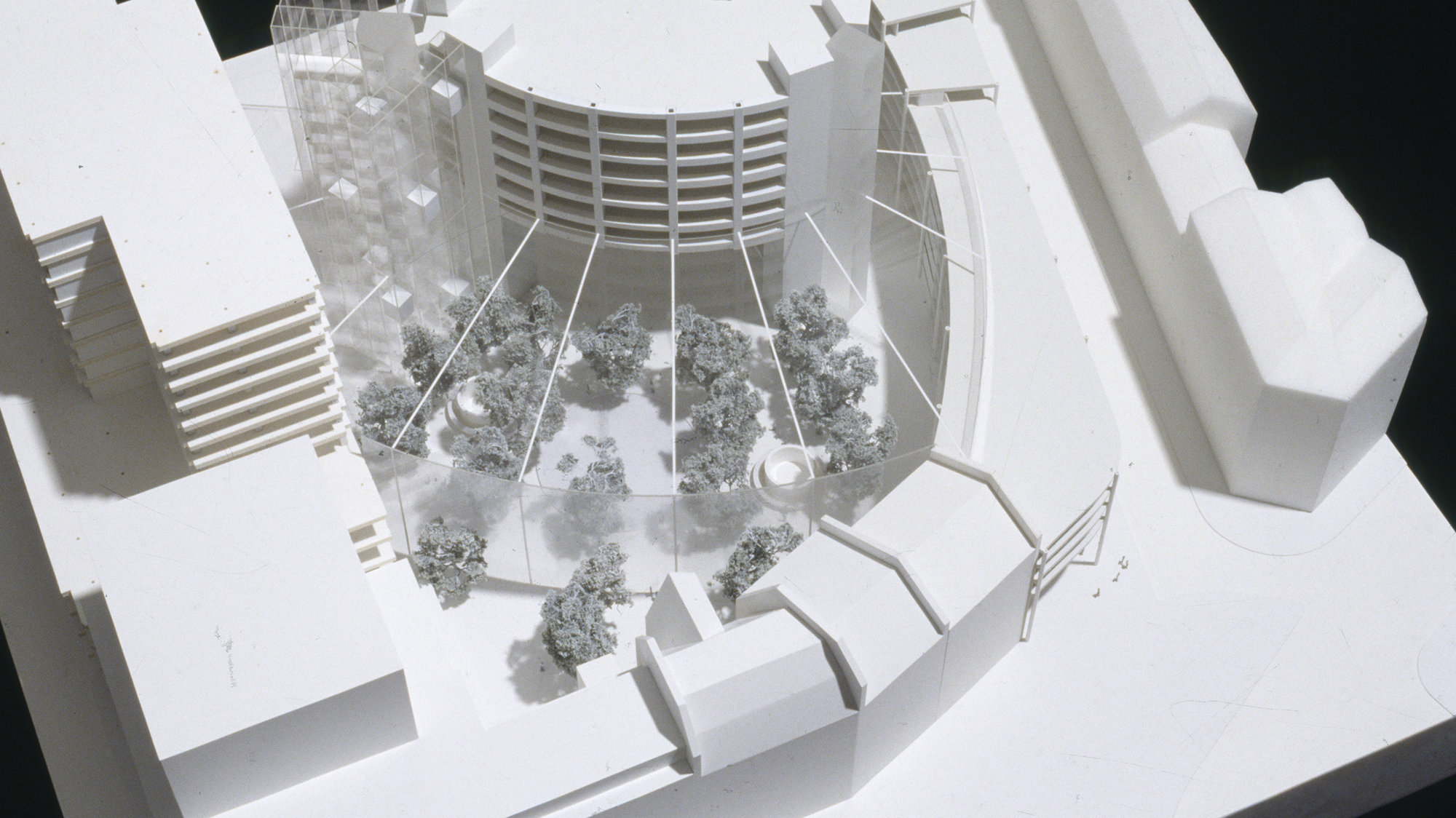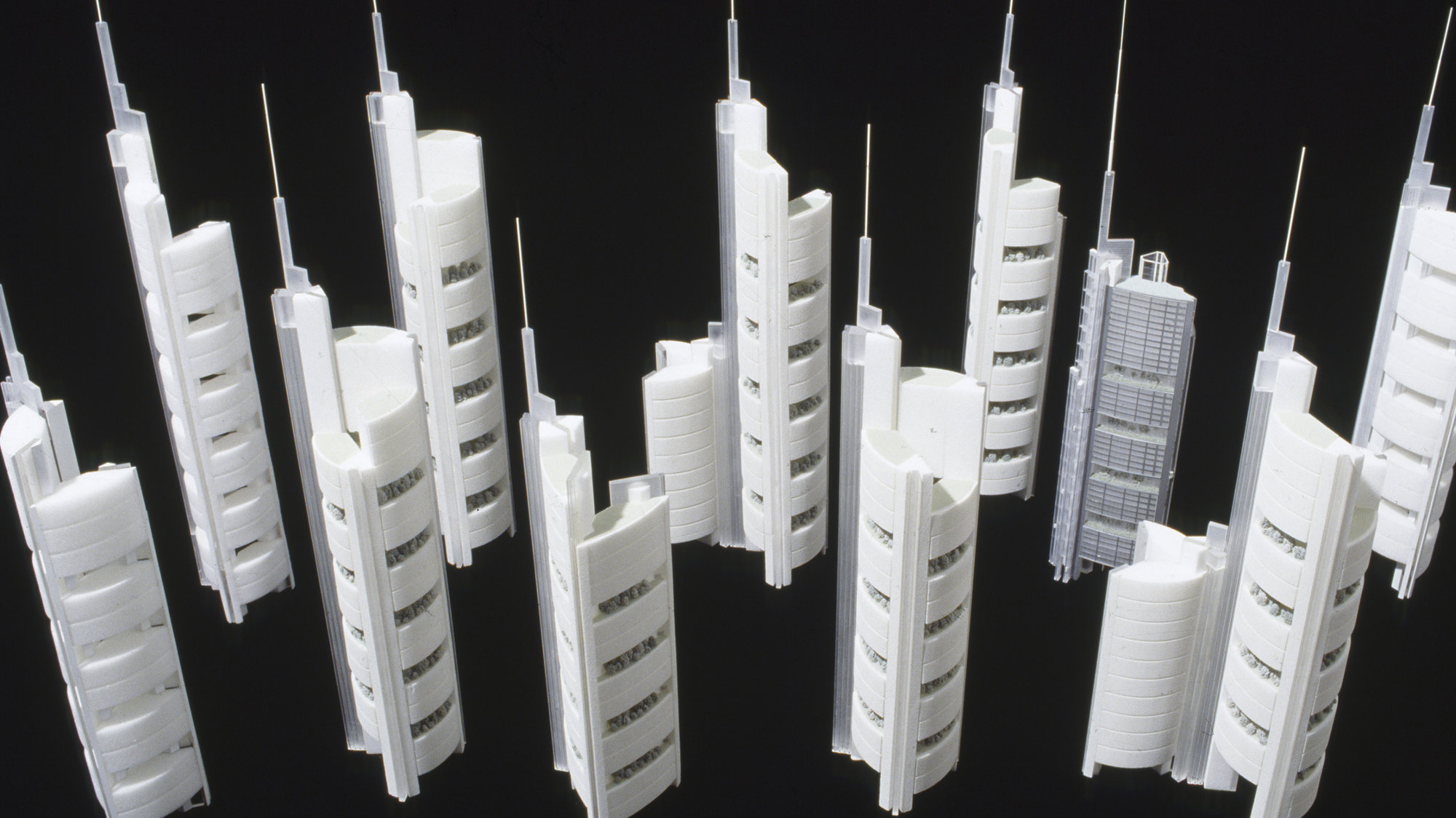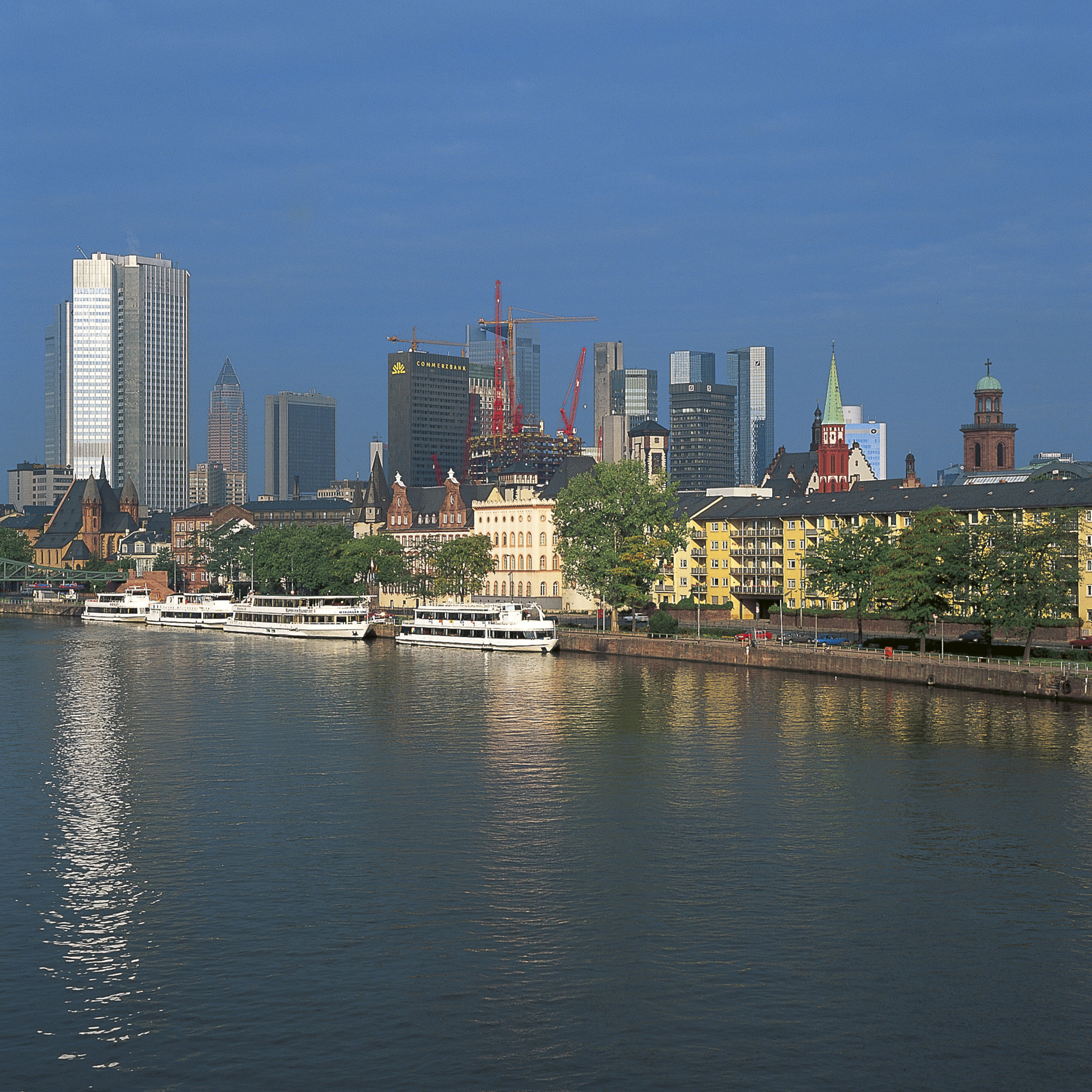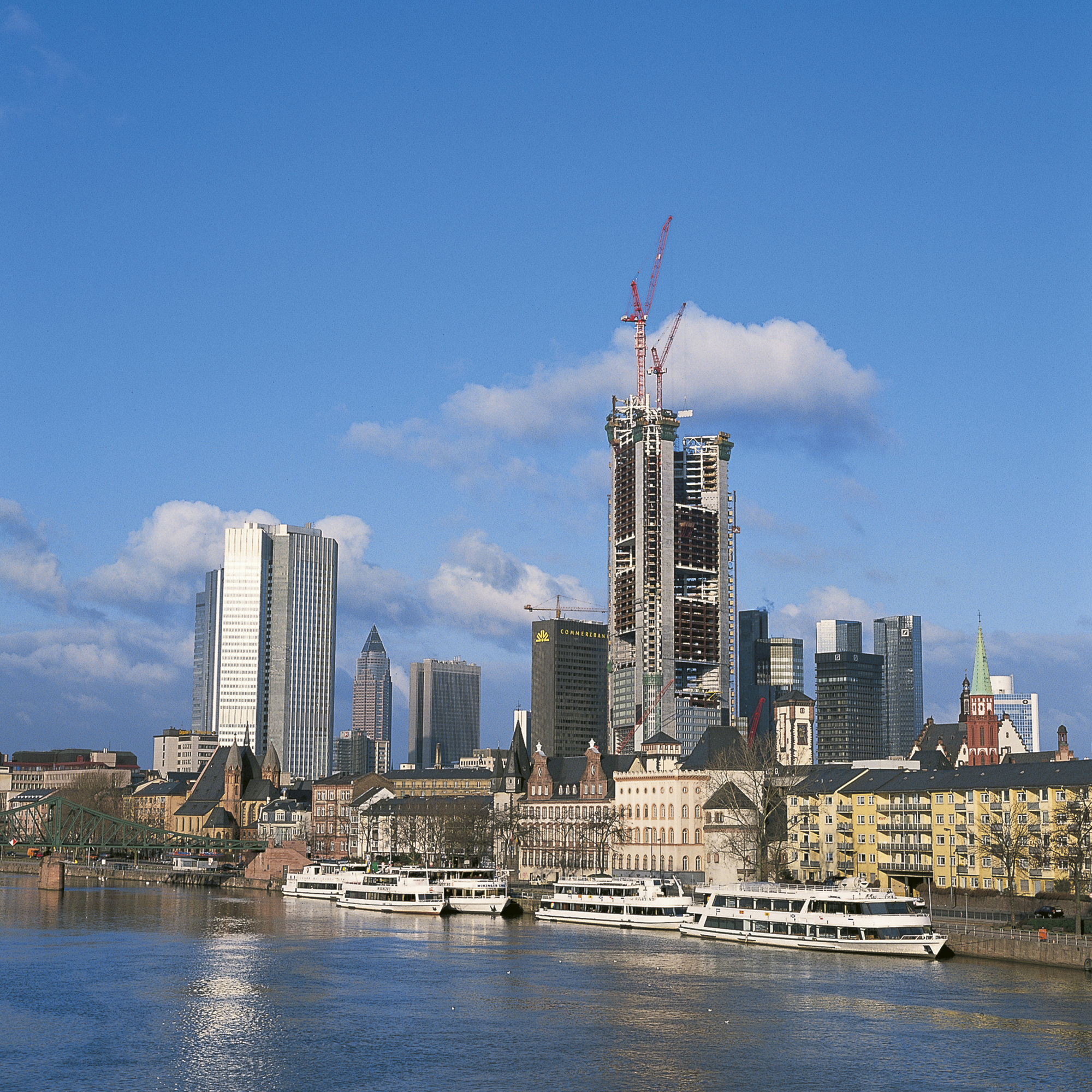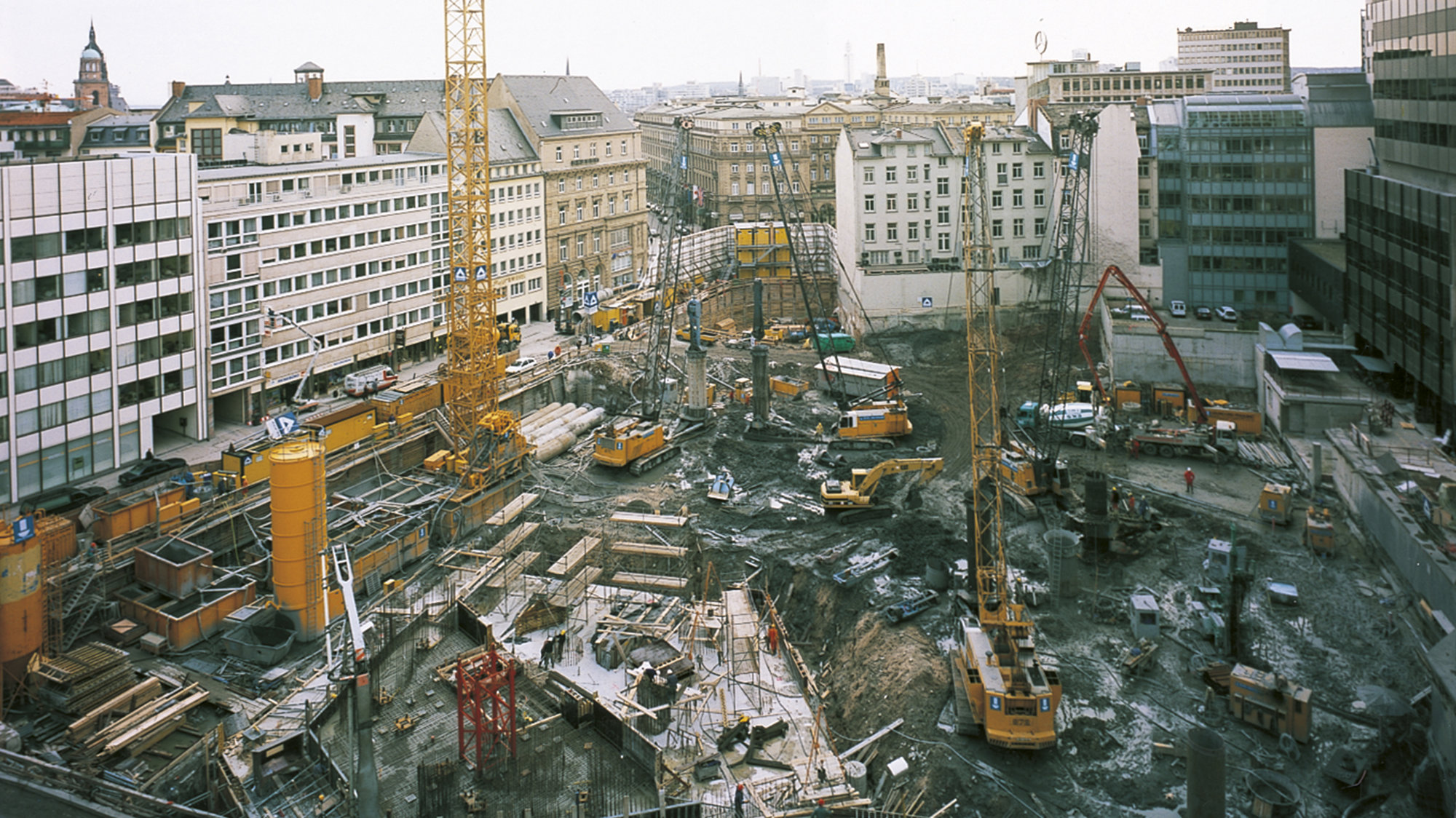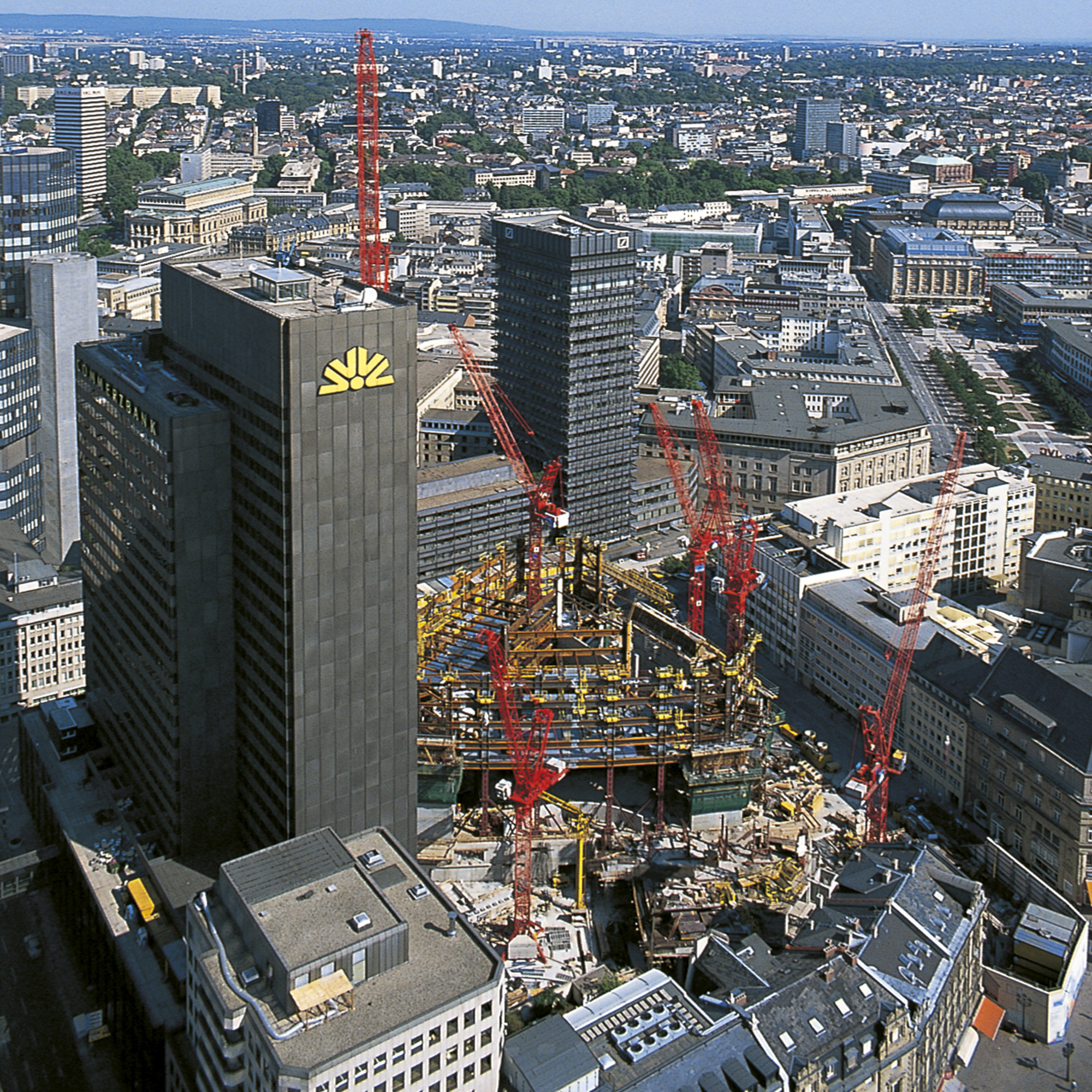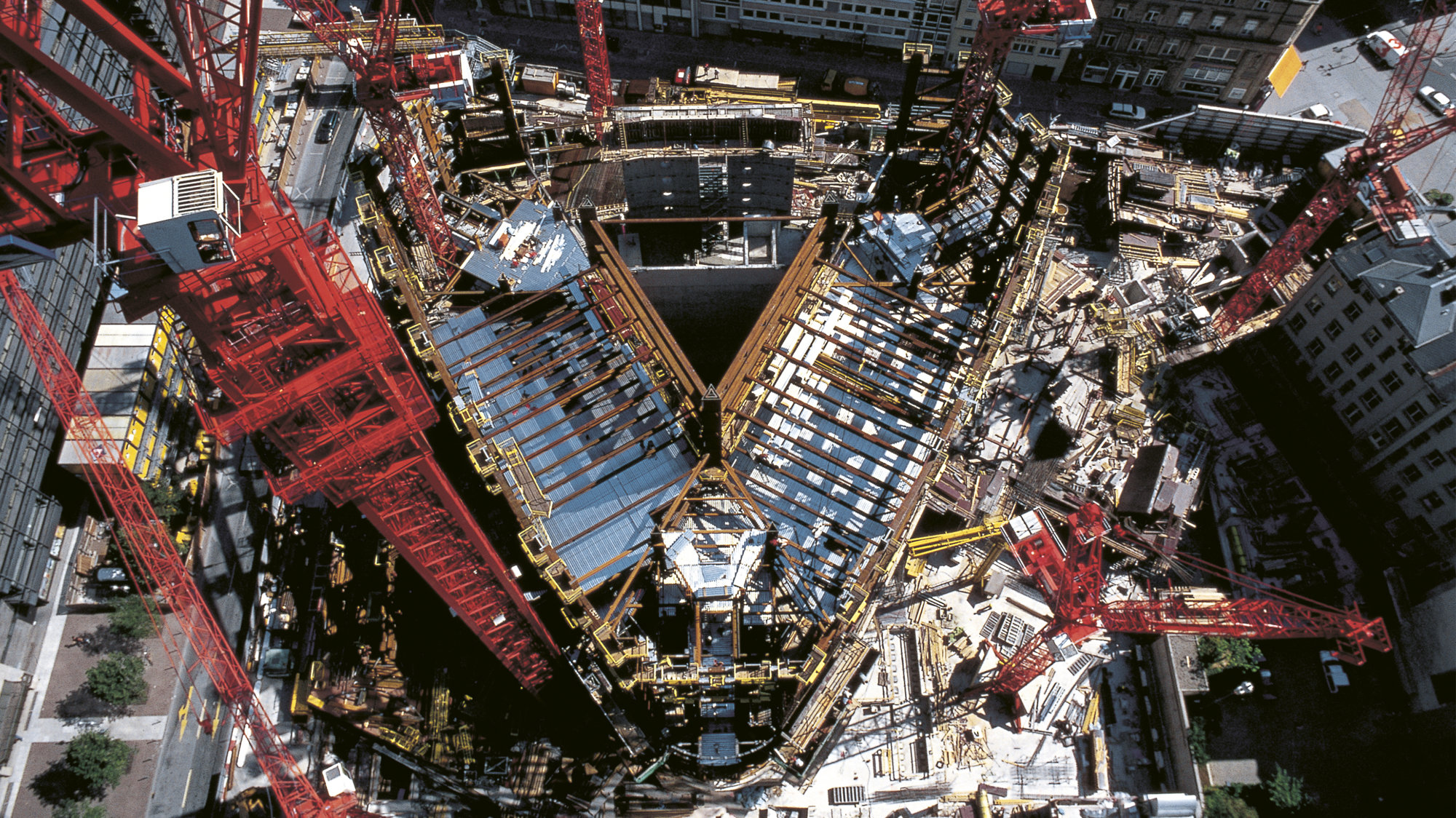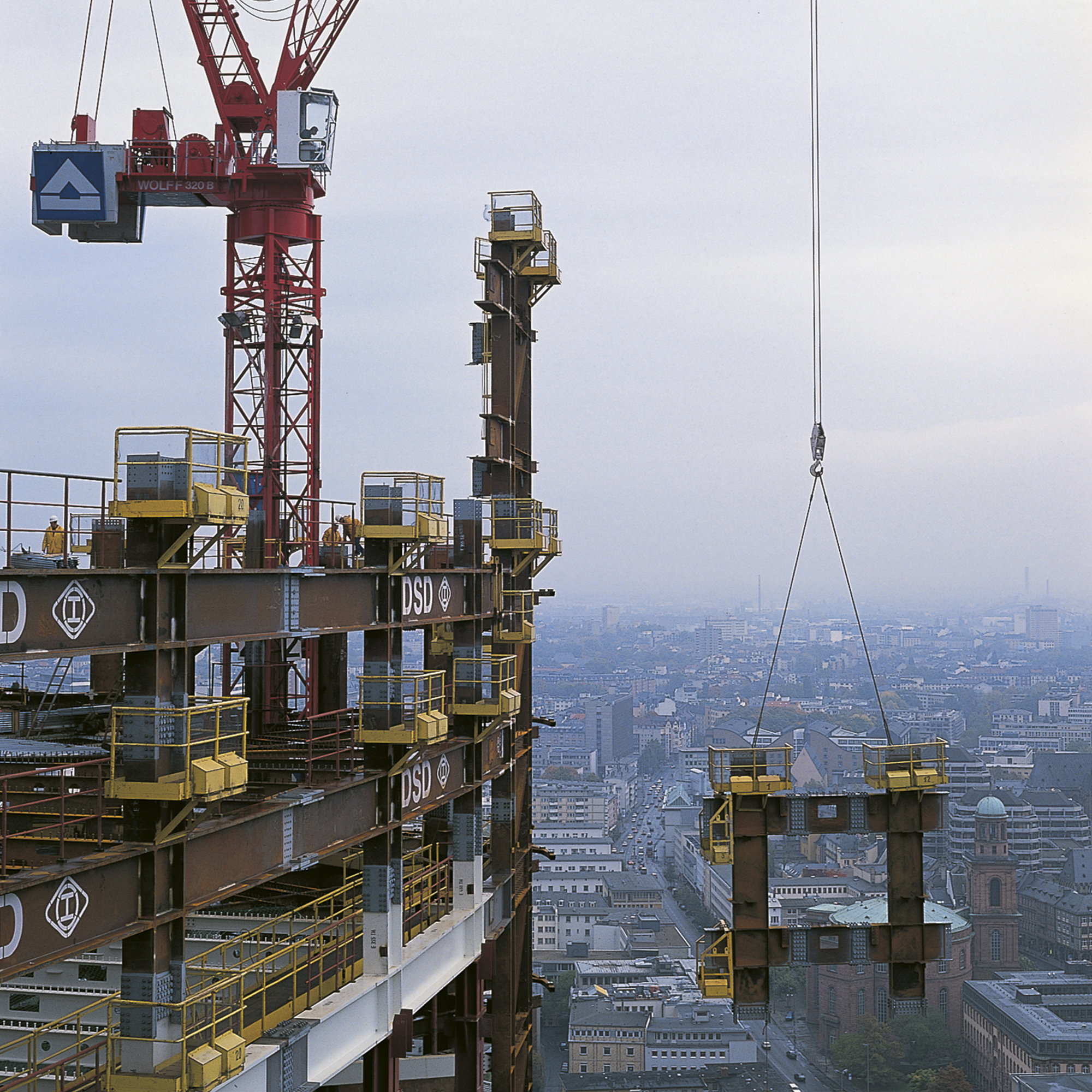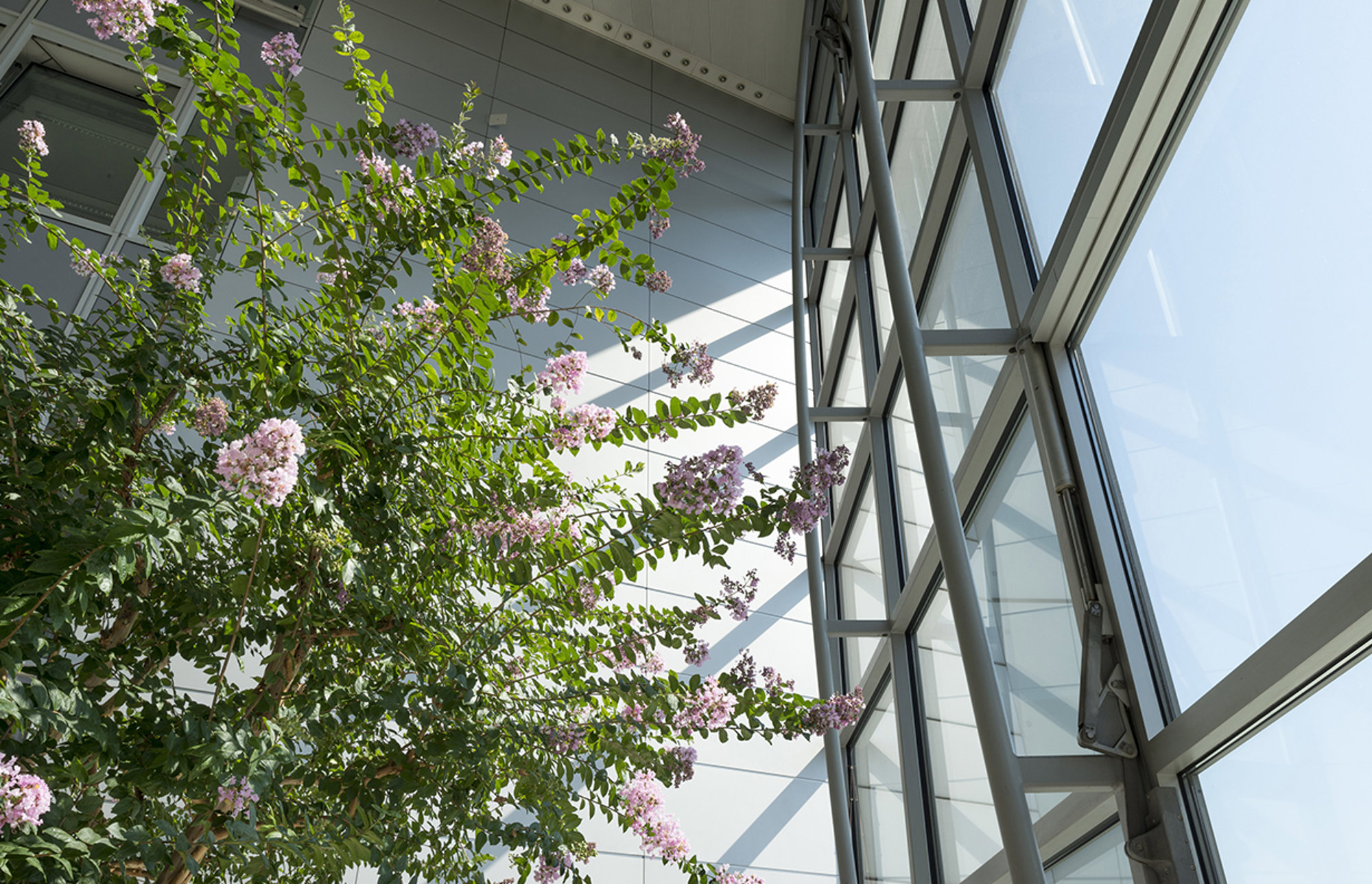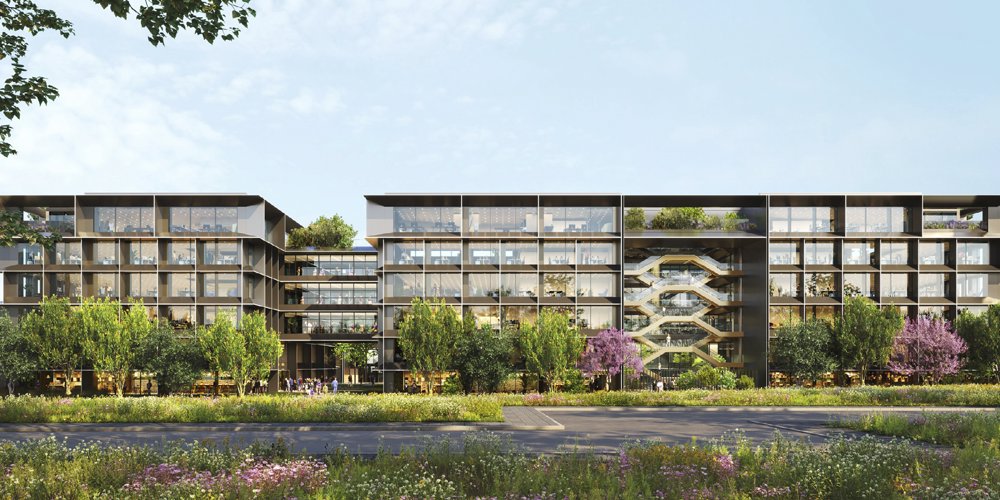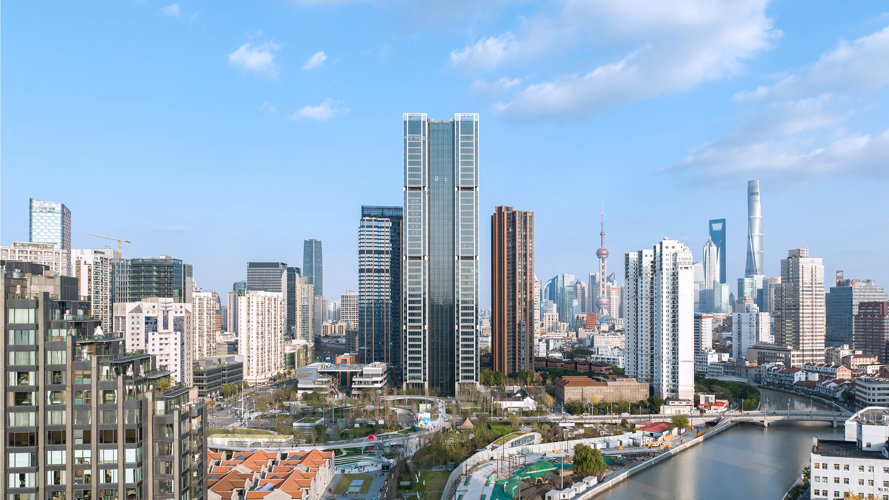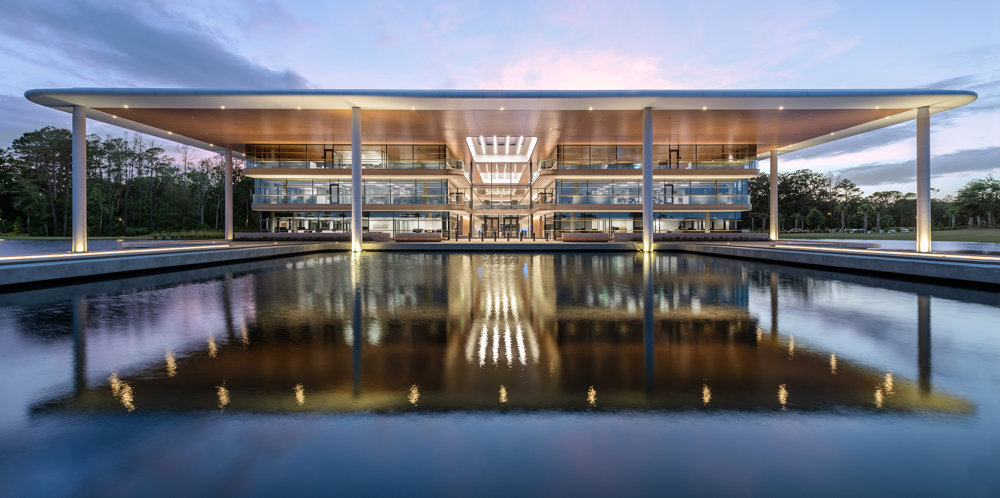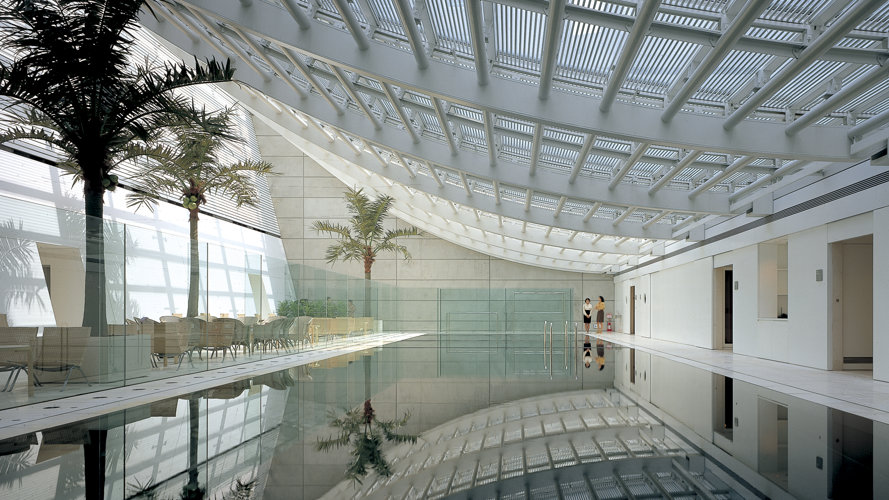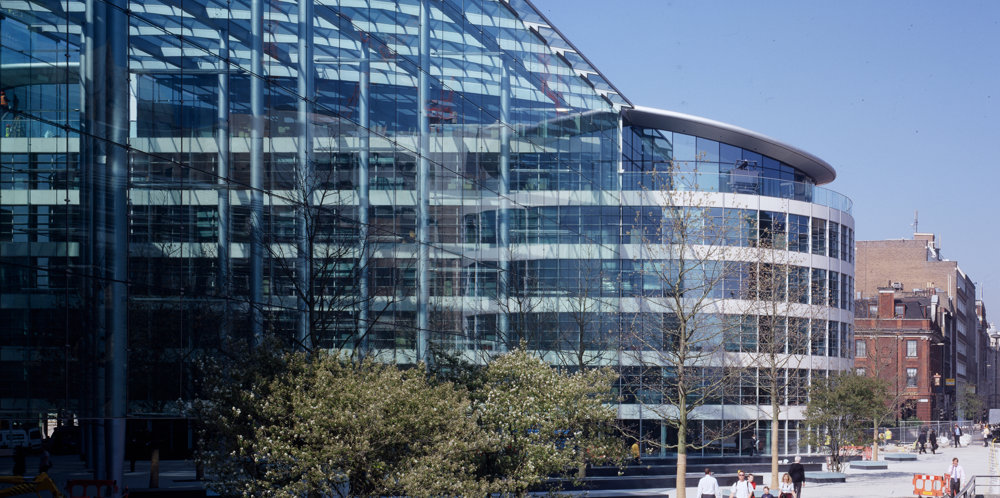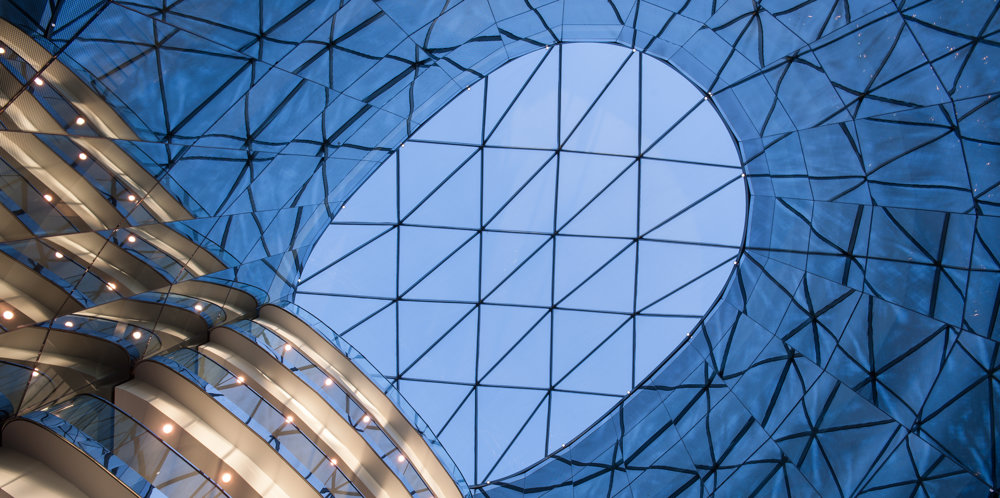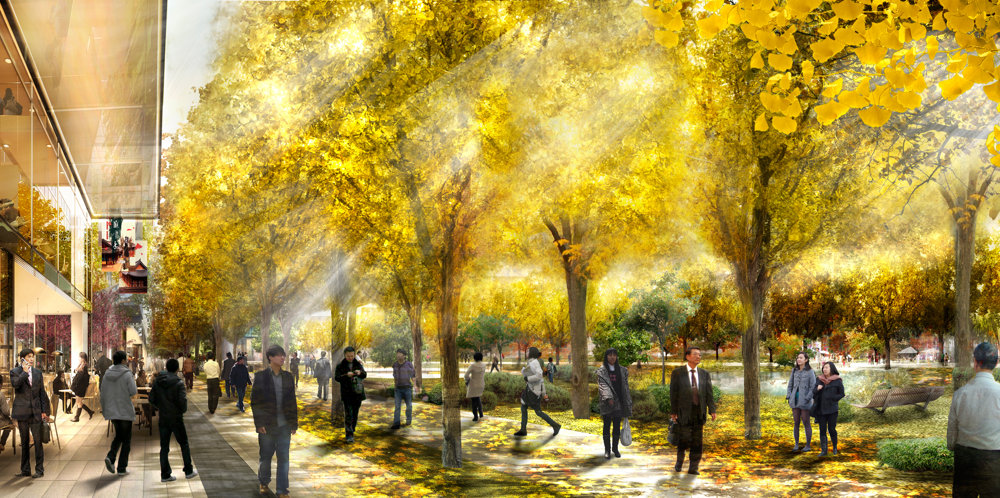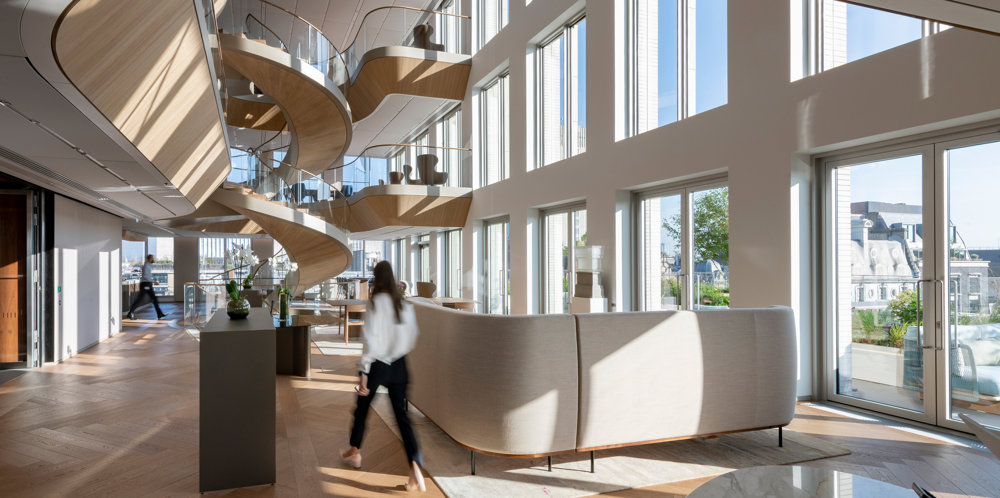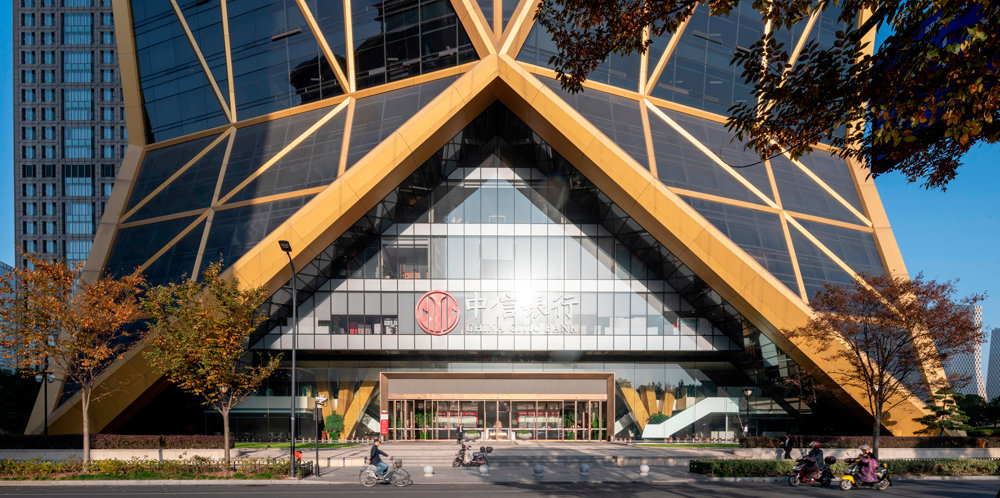At fifty-three storeys, the Commerzbank is the world’s first ecological office tower and on completion it was the tallest building in Europe. The project explores the nature of the office environment, developing new ideas for its ecology and working patterns. Central to this concept is a reliance on natural systems of lighting and ventilation. Every office is daylit and has openable windows, allowing the occupants to control their own environment. The result is energy consumption levels equivalent to half those of conventional office towers – the offices are now naturally ventilated for 85% of the year.
The plan of the building is triangular, comprising three ‘petals’ − the office floors − and a ‘stem’ formed by a full-height central atrium. Winter gardens spiral up around the atrium to become the visual and social focus for four-storey office clusters. From the outside these gardens in the sky give the building a sense of transparency and lightness. Socially, they form focal points for village-like clusters of offices, providing places to meet colleagues or relax during breaks. Environmentally, they bring light and fresh air into the central atrium, which acts as a natural ventilation chimney for the inward-facing offices. Depending on each garden’s orientation, planting is from one of three regions: North America, Asia or the Mediterranean.
The tower has a distinctive presence on the Frankfurt skyline but is also anchored into the lower-scale city fabric, through the restoration and sensitive rebuilding of the perimeter structures to reinforce the original scale of the block. These buildings provide shops, car parking, apartments and a banking hall, and help to forge links between the Commerzbank and the broader community. At the heart of the scheme is a public galleria. With its restaurants, cafés and spaces for social and cultural events, it has become a popular pedestrian thoroughfare. Interestingly, on the day the Commerzbank opened, the Financial Times adopted it as the symbol of Frankfurt, just as it features the Houses of Parliament and the Eiffel Tower as symbols of London and Paris.









